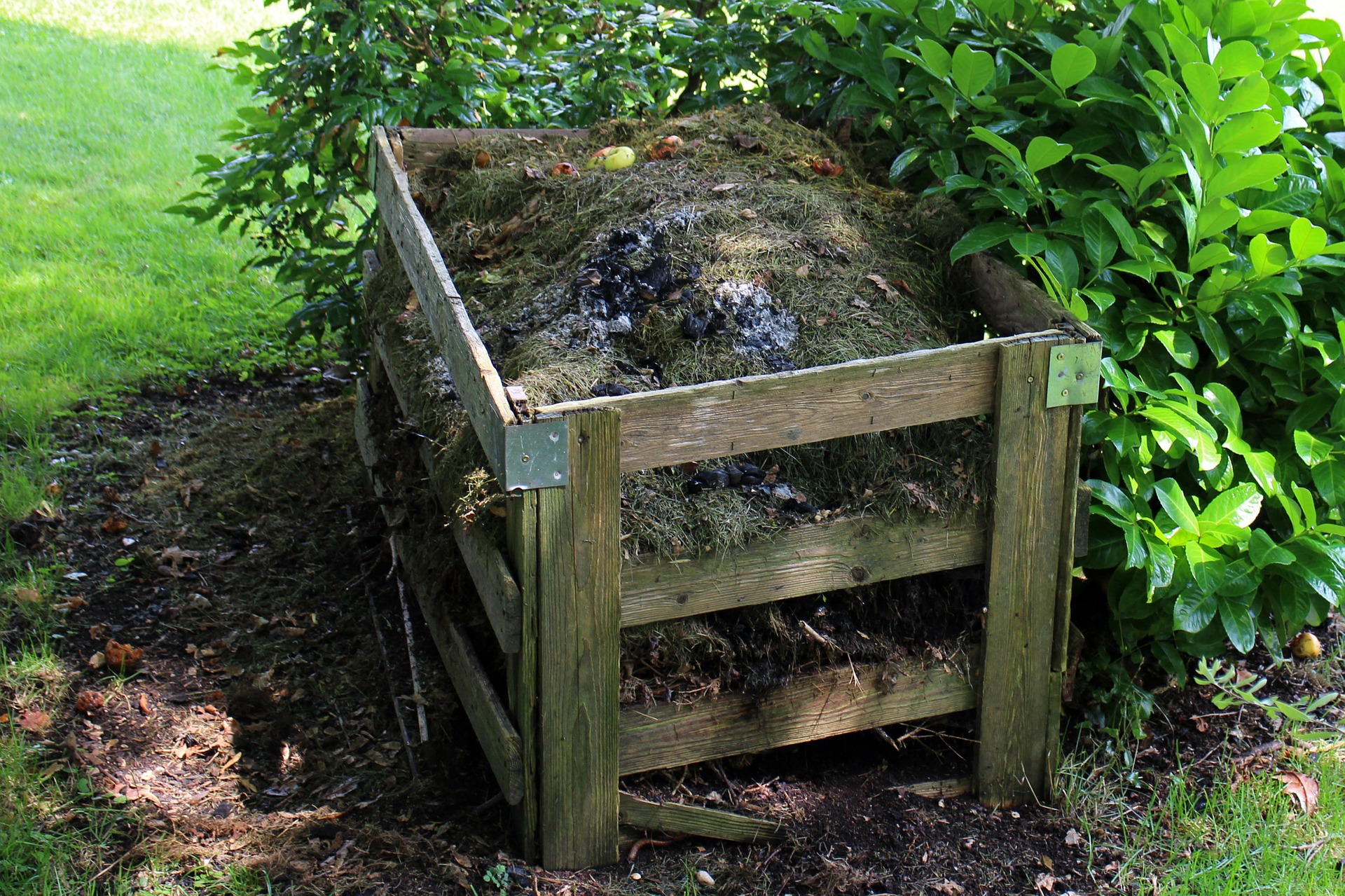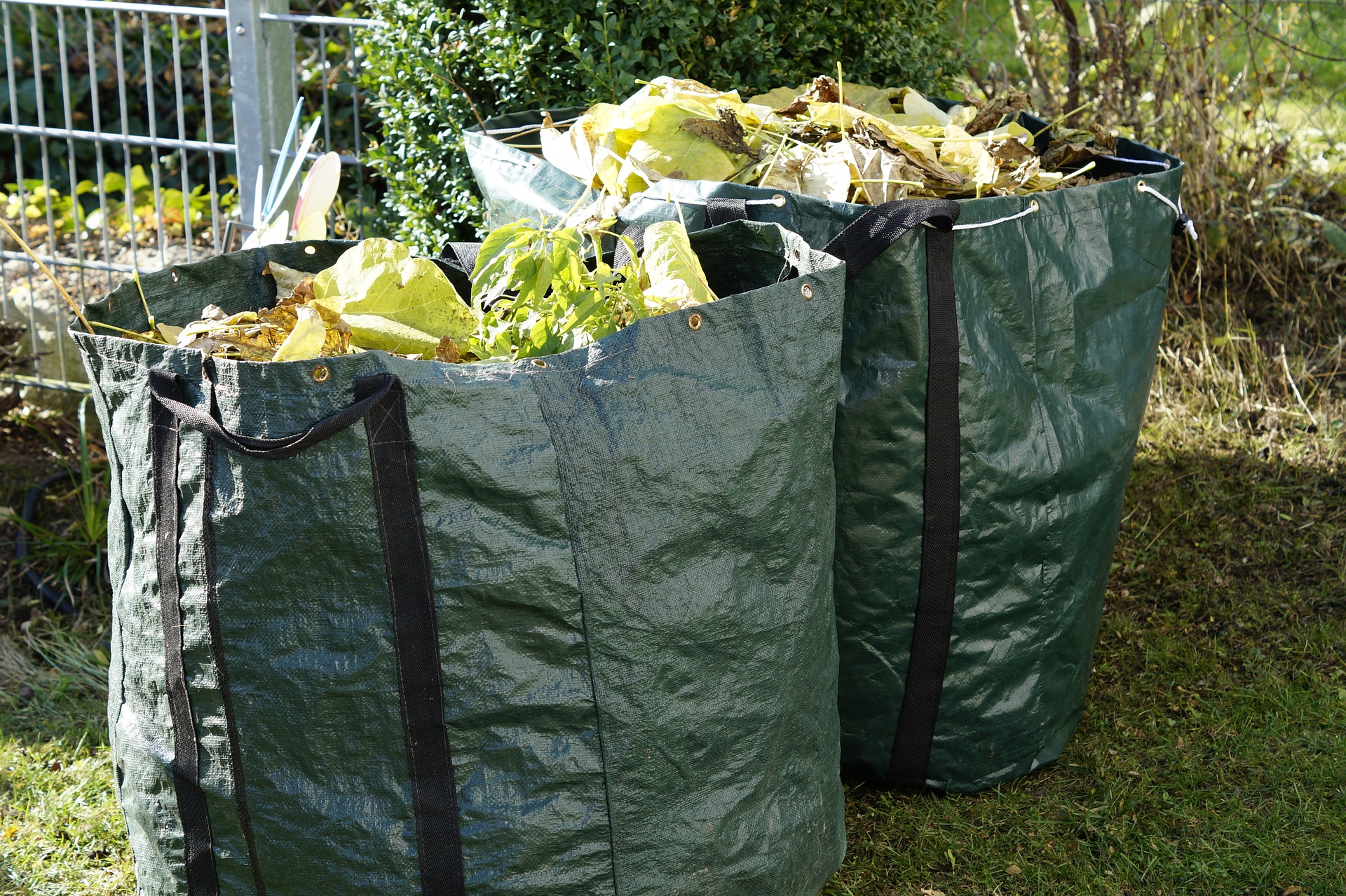These smart ways to compost materials in the garden will help turn scraps into compost that is the best gardening fertilizer.
Garden and lawn maintenance should not necessarily be expensive or hard. You can grow healthy and vigorous plants and minimize your waste by finding new purpose to old or junk materials around your home. Here are some ideas how to improve your garden, while helping the environment.

Composting
Composting is the cornerstone of organic and sustainable gardening. This is the process of naturally decomposing organic matter and turning it into a soil amendment. It is an easy and inexpensive way to reuse green waste, kitchen scraps and all sorts of organic materials into rich fertilizer, mulch, soil conditioner or potting mix ingredient. There are two main composting types – active (or hot) and passive (or cold). The first one requires regularly turning the pile and provides quicker results. Passive composting is less involving but it takes longer to produce the final material.
* Pick a Location
If you have made up your mind and want to make your own compost pile, you need to choose an appropriate place. There are several things you should consider. Take into account your neighbours’ views and concerns. A compost pile may not be pleasant to see or to smell. You should also check the regulations in your area. The ideal place for composting is within easy reach. You will need to apply water and eventually turn the pile often. Avoid locations with poor drainage. Pick a shady a place to prevent the compost from drying out.
The lack of space should not stop you from composting. You can fit a compost bin even on your balcony or in a small courtyard. Compost containers come in different designs and sizes to suit any needs.
* Choose a Container
Basically, you have two options – to have your compost directly on the ground or to keep it in a compost bin. You can choose between stationary or rotating compost bins. Whichever you pick, you will need to turn the contents periodically to mix the contents and provide enough oxygen. Create a pile depending on the amount of organic matter you need to decompose and the size of your space. Keep in mind that a well designed container will retain moisture and heat, providing you with quick and effective results. Bonus Tip: You can use broken or unnecessary items around your home to make your own compost bin.
* Hot Composting
Hot composting is the quickest way to make garden humus. It is called “hot”, because the temperature inside the compost pile can reach 160°F, destroying weed seeds and harmful organisms. The size of the pile and the layer arrangement is crucial. The compost pile should be around 4-foot cube to keep the temperature high. Layer the ingredients like a cake. Place the carbon materials at the bottom. Add a layer of soil followed by nitrogen-based materials. Add water and make holes to aerate. The pile should have a consistency of a damp sponge. Check the temperature often. If you need more heat, add materials that are rich in nitrogen. If your pile gets stinky, introduce more air. Turn the compost once a week.

* Cold Composting
Cold composting incorporates the same ingredients as hot composting, except for weeds. The process is ideal for busy gardeners because it requires less effort. The downside is that cold composting takes longer to produce the final product (around a year or more).
* Ingredient Mix
Any organic matter can go into your compost pile. Your primary purpose is to create compost with the right ration between carbon and nitrogen ingredients. For best results, you need around 30 parts of carbon to 1 part of nitrogen materials. The excess of carbon will slow down the decomposing process. Here is a list of the most common carbon and nitrogen ingredients.
High Carbon
* Wood, ashes
* Cardboard, paper
* Pine needles
* Corn stalks
* Sawdust
High Nitrogen
* Coffee grounds
* Food waste
* Grass clippings
* Garden waste
* Hay Mulching
Mulching is one of the most beneficial gardening practices, because it preserves the moist in the soil, prohibits certain plant diseases and helps with the weed control. It also gives planting beds well-maintained and uniform look. Mulching insulates the soil, protects the plant roots and improves land’s fertility. Plus, it offers another way to reuse the waste materials around your home.
* Types of mulch
Mulches are available in various forms and include both organic and inorganic matter. Organic mulch includes garden waste such as pine needles, softwood bark, leaves etc. Pulverized rubber, geotextile fabrics, lava rock and other types of stones constitute non-organic mulch.
* Proper mulching
The choice of mulch and the application are essential for the health of your greenery. Before applying the mulch, be sure the soil drainage is adequate. The mulch material may influence your plants.

